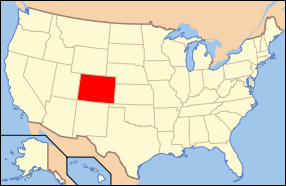U.S. juvenile detention has fallen to the lowest level in 35 years, due largely to the increase and growth of remediation programs. According to the U.S. Census Bureau’s Census of Juveniles in Residential Placement, 44 states have reduced their confinement of juveniles rates between 1997 and 2010, with declines of 66% in Tennessee, 57% in Arizona, 48% in California and 44% in Texas. On the other hand, incarceration rates rose over the period In Nebraska, Idaho, West Virginia, Pennsylvania and South Dakota. Over the same period, youth violence dropped significantly.
Bart Lubow, director of The Annie E. Casey Foundation, whose recent study is titled “Youth Incarceration in the U.S” states:
The decline is very significant because America for a long time did nothing but build up its incarcerated young population. But in recent years, there has been a radical sea change. It is a highly important social development that has largely gone on under the radar.
The findings reflect a trend toward less harsh treatment of youthful infractions. Scientific research shows that youths can more easily control destructive impulses as their brains mature.
Most juveniles are confined for minor offenses—such as violating curfew or running away from home—offenses that would not be considered illegal if committed by those 18 and older.
Juvenile justice systems still treat children of color much more punitively than Anglo kids—confining five times more African-American youngsters and two-to-three times more Latinos and Native Americans than Whites.
The Casey Foundation finds wholesale incarceration counterproductive and provides technical assistance to 200 jurisdictions attempting to reduce it.
According to Bartholomew Sullivan, writing in the Memphis Commercial Appeal:
The Casey Report recommends five steps to accelerate the drop in youth detention, including restricting incarceration only to those “who pose a demonstrable risk to public safety” and upending the financial incentives for correctional placement.
The recent de-incarceration trend provides a unique opportunity to implement responses to delinquency that are more cost-effective and humane and that provide better outcomes for youth, their families and communities.
The number of juveniles committed to the Colorado Division of Youth Corrections has dropped by 44 percent in the past seven years, the result of programs that have put more focus on rehabilitation than detention. Declining populations at the facilities are a result of successfully combining front-end programs—designed to help adolescents before they enter the justice system—and efforts to stop released juveniles from returning.
Colorado Director of Youth Corrections John Gomez states:
Declining populations at our facilities are a result of successfully combining front-end programs—designed to help ad<olescents before they enter the justice system—and efforts to stop released juveniles from returning. We’ve continued to work at ensuring that we are providing the right services at the right time.
With fewer juveniles in detention, the Colorado Department of Human Services, which manages youth corrections, has asked lawmakers to move nearly $8 million from youth corrections to child-welfare services, including early-intervention programs for children and teens before they enter the juvenile justice system.
In the past year, Colorado has enjoyed a 13% drop in youth recidivism. And more juveniles being released from youth corrections are equipped with skill sets that will help them when they return home. While serving their commitments, juveniles can earn their GEDs or high school diplomas and work with their families before being released.















[…] Youth Incarceration Down in U.S., Colorado […]
How wonderful that in Colorado, the number of juveniles committed to the Colorado Division of Youth Corrections has dropped by 44 percent in the past seven years, the result of programs that have put more focus on rehabilitation than detention. By sending a youth to a juvenile detention center, they go in with an undergraduate degree in crime and come out with a PHD. Restricting incarceration only to those who demonstrate a risk to public safety and placing all others in programs close to home is much more cost effective and humane as the article said. My organization, ARISE Foundation says EDUCATE NOT INCARCERATE. LIFE SKILLS ARE NOT HEREDITATY, THEY MUST BE TAUGHT.